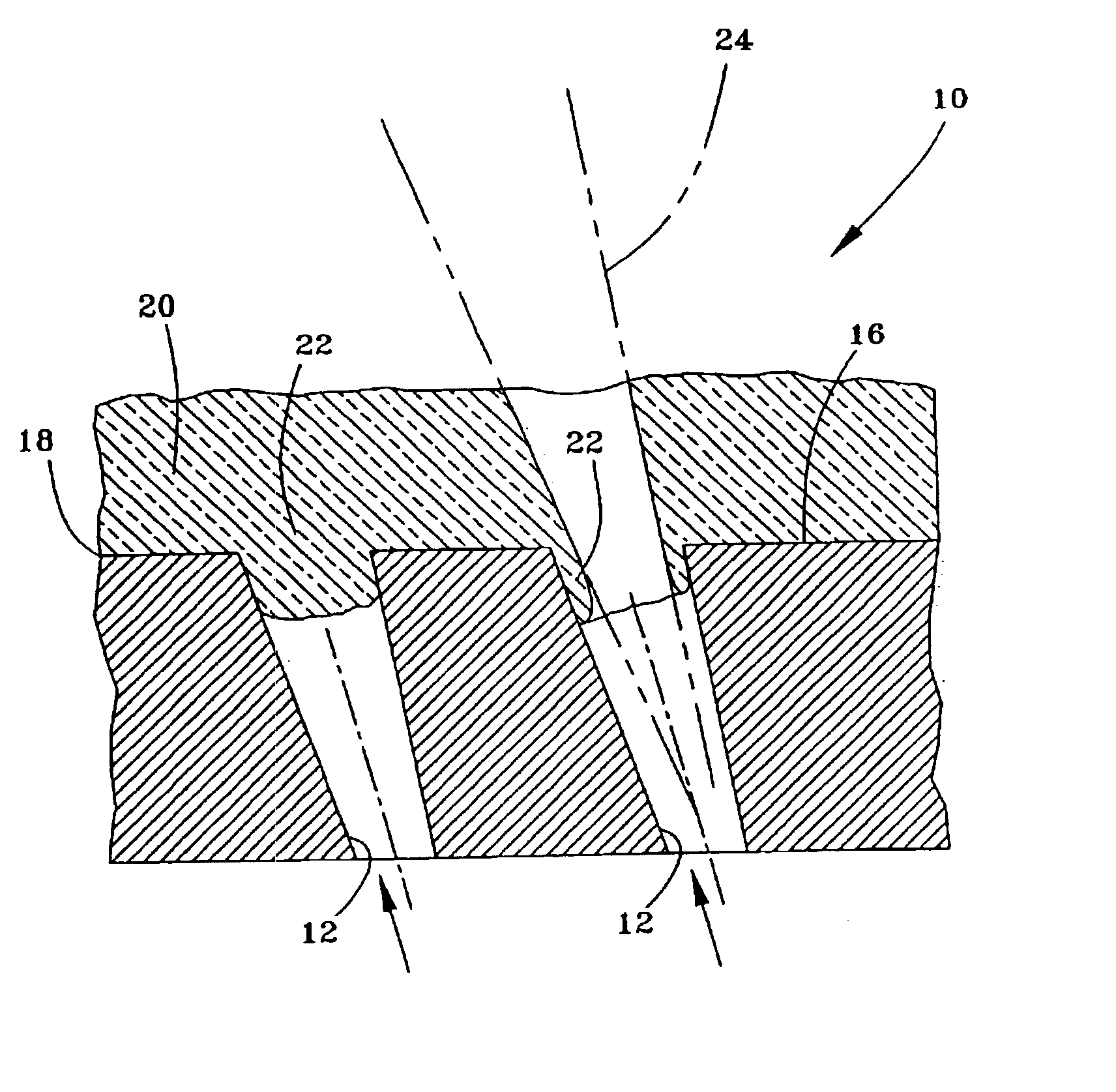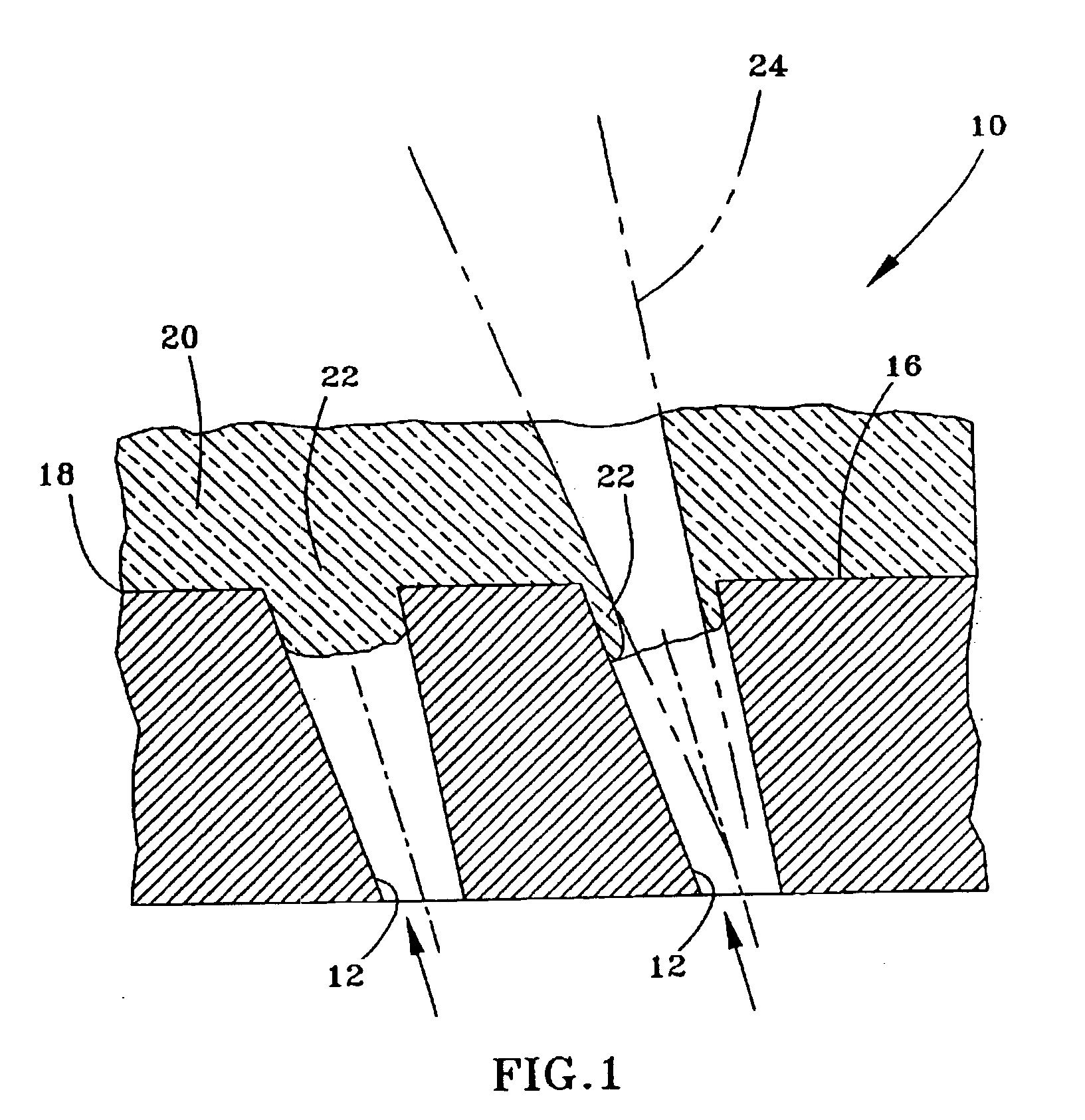Process of removing a ceramic coating deposit in a surface hole of a component
- Summary
- Abstract
- Description
- Claims
- Application Information
AI Technical Summary
Benefits of technology
Problems solved by technology
Method used
Image
Examples
Embodiment Construction
FIG. 1 represents a cross-sectional view through cooling holes 12 that intersect a surface 16 of an air-cooled component 10 of a gas turbine engine. The component 10 may be formed of an iron, nickel or cobalt-base superalloy, though other high temperature materials could foreseeably be used. As known in the art, to minimize the service temperature of the component 10, heat is transferred from the component 10 by forcing bleed air through the cooling holes 12 in a direction indicated by the arrows in FIG. 1. The amount of heat transferred to the surface 16 of the component 10 can be further reduced by forming the cooling holes 12 to be disposed at an acute angle relative to the surface 16 of the component 10, so that air discharged from the cooling hole 12 flows over the surface 16 of the component 12. Suitable techniques for forming the holes 12 include EDM or laser drilling, though it is foreseeable that the holes 12 could be formed by such other methods as casting or abrasive wate...
PUM
| Property | Measurement | Unit |
|---|---|---|
| Temperature | aaaaa | aaaaa |
| Temperature | aaaaa | aaaaa |
| Time | aaaaa | aaaaa |
Abstract
Description
Claims
Application Information
 Login to View More
Login to View More - R&D
- Intellectual Property
- Life Sciences
- Materials
- Tech Scout
- Unparalleled Data Quality
- Higher Quality Content
- 60% Fewer Hallucinations
Browse by: Latest US Patents, China's latest patents, Technical Efficacy Thesaurus, Application Domain, Technology Topic, Popular Technical Reports.
© 2025 PatSnap. All rights reserved.Legal|Privacy policy|Modern Slavery Act Transparency Statement|Sitemap|About US| Contact US: help@patsnap.com


